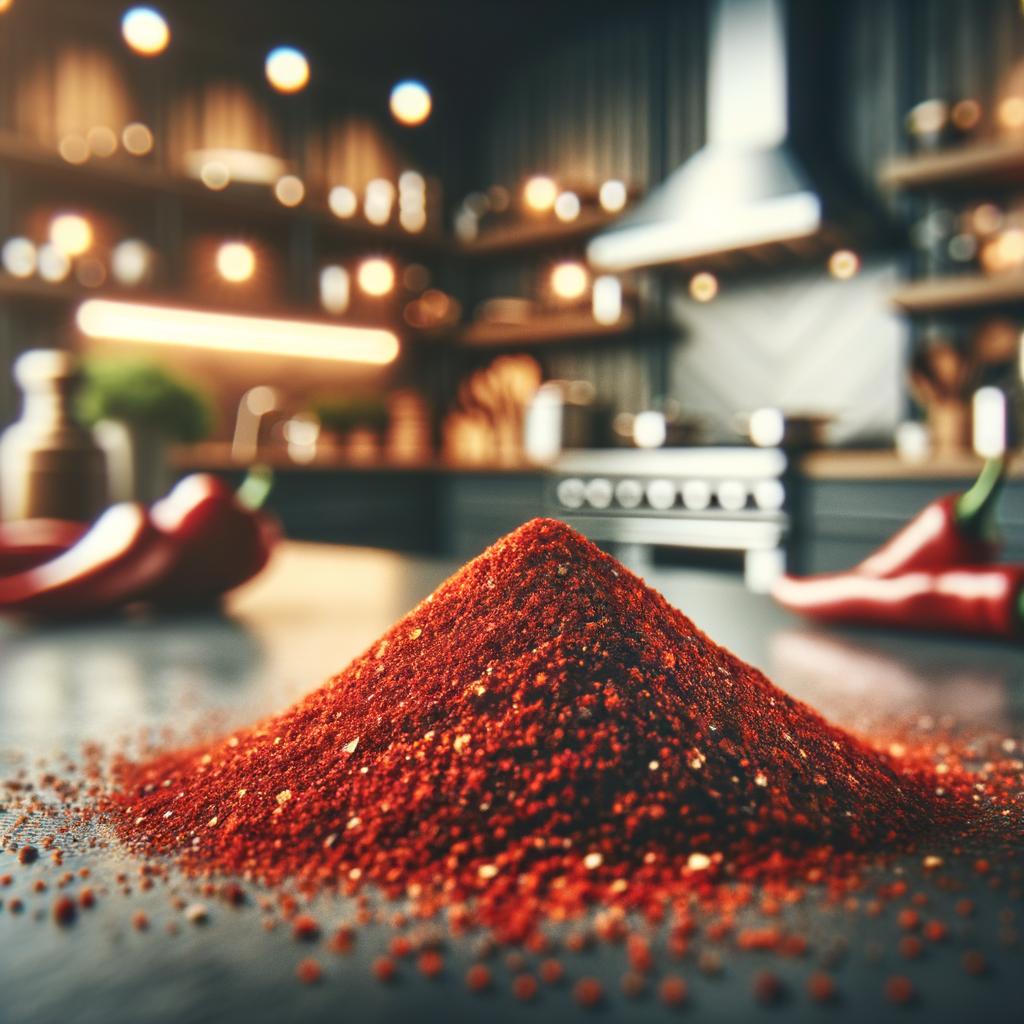Red Chili Powder

Description Red chili powder, a fiery spice that ignites the taste buds, is a vibrant crimson hue that can range from a bright poppy red to a deep, smoky maroon. It is finely ground from dried red chilies, offering a texture that is soft to the touch, akin to powdered velvet. The flavor profile is a tantalizing dance of heat, earthiness, and a subtle sweetness that lingers on the palate. What sets red chili powder apart from similar spices is its ability to impart a robust warmth and depth of flavor without overpowering the dish's intrinsic flavors.
Primary Uses Red chili powder is a universal spice, finding its place in a myriad of cuisines across the globe. In Mexican cuisine, it is a key component in mole sauces and chili con carne. Indian cuisine uses it extensively in curries, dals, and biryanis to add warmth and color. It also plays a significant role in Korean cuisine, where it is used to make the spicy paste gochujang. Beyond culinary uses, red chili powder is also used in traditional medicines for its potential health benefits and is a significant symbol in cultural rituals, including warding off the evil eye in certain cultures.
History The history of red chili powder is as fiery as its taste. Originating in the Americas, chilies were introduced to the rest of the world by Christopher Columbus and were quickly adopted into various cuisines. The practice of drying and grinding chilies into a powder form started in regions with a hot and dry climate, which was conducive for sun drying. Over time, red chili powder became a global phenomenon, with different regions cultivating their unique varieties of chilies. There is a romantic notion associated with the Silk Road, where it is believed that the spice traveled, spreading its warmth and color across the continents.
Nutritional Information Red chili powder is not just a spice, it's a powerhouse of nutrition. It is rich in Vitamin C, which aids in immunity, and Vitamin A, which supports eye health. It also contains capsaicin, a compound that is believed to have anti-inflammatory and antioxidant properties. Compared to fresh chilies, the red chili powder has a concentrated nutritional profile due to the drying process. However, moderation is key, as excessive consumption can lead to digestive issues. As a food historian, it's fascinating to see how this humble spice has traveled and evolved, adding its warmth and color to our plates and our health.

